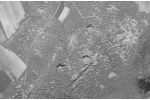Stp 109 Düsseldorf
From 1942 onwards, defensive elements were installed on the Cap Blanc-Nez, as part of the creation of the Altlantic Wall, a fortification designed to prevent an Allied landing on Europe's western coasts, from Norway to the French Basque country. Considerably reinforced under the impetus of Marshal Rommel, the defenses of the Pas-de-Calais shoreline constituted a formidable obstacle in 1944, prompting Allied strategists to choose Normandy to gain a foothold on the continent.
Preventing the Allied landings:
During theSecond World War, the Cap Blanc-Nez was a strategic site of prime importance
After the failure of the Luftwaffe (the German Air Force) in the Battle of Britain and the abandonment of Hitler's plan to land in Great Britain (Operation Sea Lion ), In autumn 1940, the Germans set up observation posts and radio equipment (radars, listening stations) to monitor the passage of enemy ships through the Strait and spot the arrival of Royal Air Force squadrons.
Lower down, you can see the concrete base of a Würzburg Pursuit radar; it carried a circular metal antenna 7.50 meters in diameter, capable of detecting Allied aircraft formations over Kent, up to a distance of 80km.
Below your feet: 3 Observation posts, grafted into the cliff at the foot of the Dover Patrol, whose visors looked towards England were used for visual control of the Strait and the English coast using powerful binoculars, but also for acquiring targets for the guns of the huge Lindermann Battery nearby.
After the failure of the Luftwaffe (the German Air Force) in the Battle of Britain and the abandonment of Hitler's plan to land in Great Britain (Operation Sea Lion ), In autumn 1940, the Germans set up observation posts and radio equipment (radars, listening stations) to monitor the passage of enemy ships through the Strait and spot the arrival of Royal Air Force squadrons.
Lower down, you can see the concrete base of a Würzburg Pursuit radar; it carried a circular metal antenna 7.50 meters in diameter, capable of detecting Allied aircraft formations over Kent, up to a distance of 80km.
Below your feet: 3 Observation posts, grafted into the cliff at the foot of the Dover Patrol, whose visors looked towards England were used for visual control of the Strait and the English coast using powerful binoculars, but also for acquiring targets for the guns of the huge Lindermann Battery nearby.


